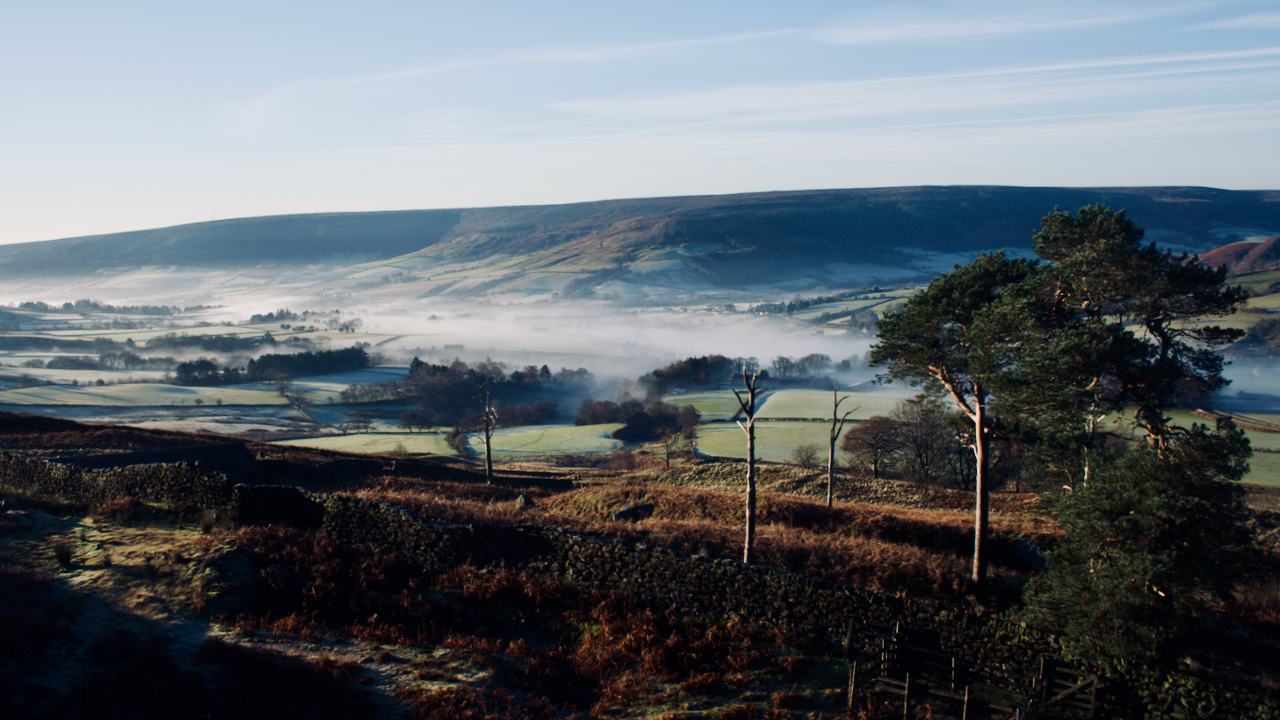Another outing dominated by low lying mists and the sun’s faculence. Bilsdale today.
I wonder what our ancient ancestors would have made of these meteorological phenomena. That temporary blind spot after glimpsing directly into the sun — ok, our ancestors would not have been driving.
And that low lying winter mist clinging to the fields and silhouetting the skeletons of the winter trees.
The Scots called this nebula ‘dalamist’, from the Old Norse word ‘dalr‘ meaning a valley1Dsl.ac.uk. (2021). Dictionaries of the Scots Language:: SND :: daal. [online] Available at: https://www.dsl.ac.uk/entry/snd/daal [Accessed 17 Dec. 2021]..
A remote cousin of dalamist is the Icelandic word “dalalæða“, which literally means a ‘valley cat’, imagine a cat slinking across the landscape2Contributors to Wikimedia projects (2007). Þoka. [online] Translate.goog. Available at: https://is-m-wikipedia-org.translate.goog/wiki/%C3%9Eoka?_x_tr_sl=is&_x_tr_tl=en&_x_tr_hl=en&_x_tr_pto=sc [Accessed 17 Dec. 2021]..
‘Brume‘ is an Old French word for a winter mist, and used in English in the early 17th-century. Originally from the Latin word ‘bruma’ — winter or winter solstice — it is just perfect for these low-lying mists that shroud the land on frosty mornings3Etymonline.com. (2021). Etymonline. [online] Available at: https://www.etymonline.com/word/brume#etymonline_v_27464 [Accessed 17 Dec. 2021]..
But best of all is ‘dragon’s-breath’4Twitter. (2021). [online] Available at: https://twitter.com/RobGMacfarlane/status/909303443042574337 [Accessed 17 Dec. 2021]., a description I can just imagine our ancient ancestors using in whatever language they spoke.
- 1Dsl.ac.uk. (2021). Dictionaries of the Scots Language:: SND :: daal. [online] Available at: https://www.dsl.ac.uk/entry/snd/daal [Accessed 17 Dec. 2021].
- 2Contributors to Wikimedia projects (2007). Þoka. [online] Translate.goog. Available at: https://is-m-wikipedia-org.translate.goog/wiki/%C3%9Eoka?_x_tr_sl=is&_x_tr_tl=en&_x_tr_hl=en&_x_tr_pto=sc [Accessed 17 Dec. 2021].
- 3Etymonline.com. (2021). Etymonline. [online] Available at: https://www.etymonline.com/word/brume#etymonline_v_27464 [Accessed 17 Dec. 2021].
- 4Twitter. (2021). [online] Available at: https://twitter.com/RobGMacfarlane/status/909303443042574337 [Accessed 17 Dec. 2021].

Leave a Reply